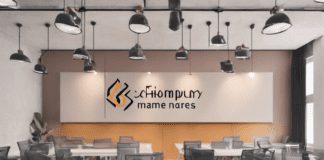Each individual in existence is vivid proof that to buy a product, a person considers a plethora of options before making the actual sales. From traditional retail to modern retail; brick-and-mortal-store to e-commerce stores; small businesses to mega-corporations; every organisation uses merchandising stock techniques.
Merchandising is the way of making the ‘first impression’ of a product that essentially triggers the consumers in making their buying decisions. It basically is a technique to improve sales by understanding consumer psychology. It uses various strategies and methods such as visuals, store layouts, colour codes and tacky price displays to attract the customer. There are a variety of merchandising types, but stock merchandising is the most popular option.
Companies such as Wal-Mart, IKEA, and Target often face instances of retail out of stock (OOS). In fact, Wal-Mart had reported a loss of roughly around 3 billion dollars solely due to OOS. Thus, in today’s world, where alternative choices are within the consumers’ reach, it becomes significantly important to focus on how to promote one’s product.
When a customer walks inside a store and skims through the shelves to find the product they desire, the merchandising techniques become extremely useful to ensure that the customer does not leave without making any purchase. Neat and tidy floors, putting fast-moving items in high traffic areas of the store, elegant display of items at shelves are few tickers that must be followed.
Though retail merchandising has appealing characteristics, the major problem that any marketing company faces is to deal with dead stock and slow-moving items. Any organisation that has huge dead stock is dealing with the loss of revenue, fading customer loyalty, and tainted brand perception. Thus, marketing experts use various ways to minimise such stocks.
Here are the following few techniques that can help to deal with slow-moving items:
Regular audit of shelves
It is very important to have regular checks of the items on display so that sufficient stocks can be maintained. This way, the consumer won’t be dissatisfied with empty shelves.
Keeping impulse products at check-out
Any item that the buyer does not, in reality, intend to buy but eventually buys without any plan of actually doing so must be kept at check-out counters. Small accessories such as socks, sponge balls, candies, et cetera have a tendency to catch the attention of customers waiting in serpentine queues.
Offering complementary products
Slow-moving goods gain pace if they are supplemented by other products. These products can either be clubbed with other slow-moving items at a relatively lower price or combined with a more desirable product.
Glamorous display of the product
It is a tactic that practically every business uses to promote sales. When a few products do not catch up with other products, such products are merchandised in such a way that it becomes visually appealing to the customers. Flashy lights, elegant packing, and discount offers are a few techniques that are frequently adopted.
It is evident that no organisation, irrespective of its size, can sustain itself without merchandising its products. Over the years, the business dynamics have given rise to new opportunities, and many companies have come up with merchandising solutions for various businesses. They offer a wide range of services such as (but not restricted to) planograms (POGs), point of sale (POS) activation, display builds, and promotional ideas to penetrate faster in the market. Thus, it is a powerful tool that has helped many companies from losing out on potential profits and increasing sales. The future withholds bright opportunities for this sector as newer methods are constantly updated and implemented into the business dynamics.











